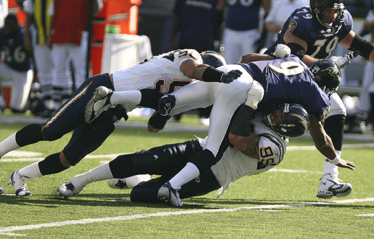Beating the Clock in Brain Injury
Diagnosing brain injury can be complex – but is a quick and simple blood test on the horizon?
Rapidly diagnosing the extent of a traumatic brain injury (TBI) is no easy task, but it is crucial to ensure that the patient receives the right treatment as fast as possible. Current tools include the Glasgow Coma Scale, pupil reactivity and computed tomography (CT) scans. However, these approaches cannot always predict damage that occurs secondary to the original insult, including sleep disturbances and memory problems, which may develop some time after the initial injury.

"Traumatic brain injury is the leading cause of death and disability among young adults and, according to the World Health Organization, by 2020 TBI will become the world's leading cause of neurological disability across all age groups,” said Lisa Hill, first author of the associated paper (1) and a Research Fellow at the Institute of Inflammation and Ageing, University of Birmingham, UK, “Early and correct diagnosis of traumatic brain injury is one of the greatest challenges facing clinicians. Being able to detect compounds in the blood which help to determine how severe a brain injury is would be of great benefit to patients and aid in their treatment (2).”
Hill and her colleagues set out to do just that, analyzing 92 inflammation-associated proteins in serum from healthy volunteers and from 30 patients diagnosed with mild TBH and extracranial injury, severe TBI and extracranial injury, and extracranial injury only. Samples were taken by emergency response teams within an hour of the injury being sustained, and analyzed using a 32 biomarker multiplex inflammation immunoassay . Three proteins – CST5, AXIN1 and TRAIL – were identified as promising biomarkers for TBI, and CST5 was further found to be able to discriminate between severely brain injured patients and those with mild or no brain injury.
The researchers plan to study the three potential biomarkers further, with a view to creating a test that could be performed before the patient arrives at hospital – or even at the side of a sports pitch. Valentina Di Pietro, co-author of the study, said “Early and objective pre-hospital detection of TBI would support clinical decision making and the correct triage of major trauma. Moreover, the correct diagnosis of TBI, which is one of hardest diagnosis to make in medicine, would allow clinicians to implement strategies to reduce secondary brain injury at an early stage (2).”
Looking further ahead, the authors hope that faster diagnosis of TBI could give a boost to drug development in this area, as early diagnosis would allow treatments to be started within the critical first hour after injury.
- LJ Hill et al., “Cystatin D (CST5): An ultra-early inflammatory biomarker of traumatic brain injury”, Sci Rep, 7, 5002 (2017). PMID: 28694499.
- Eurekalert, “Researchers hope new biomarkers will lead to sports pitch-side test for brain injury”, (2017). Available at: bit.ly/2tq6m3. Accessed July 19, 2017.

I have an extensive academic background in the life sciences, having studied forensic biology and human medical genetics in my time at Strathclyde and Glasgow Universities. My research, data presentation and bioinformatics skills plus my ‘wet lab’ experience have been a superb grounding for my role as a deputy editor at Texere Publishing. The job allows me to utilize my hard-learned academic skills and experience in my current position within an exciting and contemporary publishing company.















